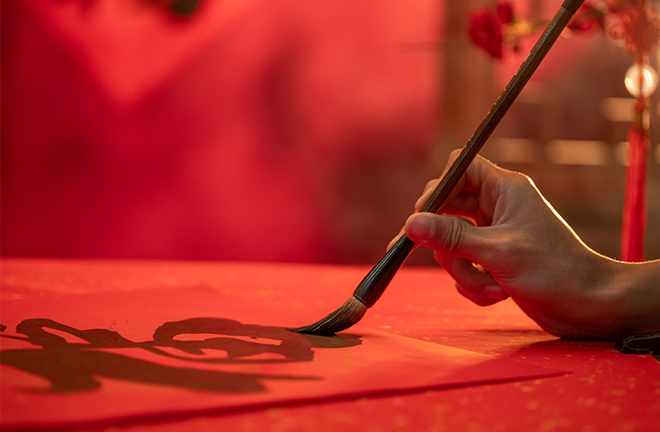Digital aesthetic education empowers traditional cultural innovation

Digital aesthetic education empowers fine traditional Chinese culture. Photo: TUCHONG
When digital technology meets aesthetic education, and innovative thinking intersects with traditional culture, a new force emerges: digital aesthetic education. This serves as a bridge, linking traditional wisdom with modern perspectives, and paving the way for both the preservation and innovation of fine traditional Chinese culture.
Connotations and main characteristics
As a new aesthetic education model bred by the digital era, digital aesthetic education leverages emerging technologies to incorporate virtual reality, augmented reality, artificial intelligence, big data, and other technologies into the realm of aesthetic education. Through digital artistic creation, display, dissemination, and teaching, it aims to comprehensively cultivate students’ aesthetic taste and creativity.
Compared to traditional aesthetic education, digital aesthetic education has several distinctive characteristics. First, there is an abundance of aesthetic education resources. Second, the learning methods are flexible. Third, the teaching format is highly interactive. Finally, digital technology fosters creativity. Digital aesthetic education should actively adapt to the digital art era, continually innovating teaching methods through deep integration with digital technology, meeting the personalized needs of students, and enhancing their digital medium literacy and artistic appreciation.
Value of fine traditional culture
Fine traditional Chinese culture is a unique, stable and enduring cultural system formed over long periods of national and societal development. It can provide a rich source of content for digital aesthetic education and serve as a vital dimension of its value. Developing digital aesthetic education not only revitalizes fine traditional Chinese culture, but also enriches digital aesthetic education itself, further showcasing its unique charm and value.
Historical accumulation and aesthetic thought: Fine traditional Chinese culture, as the historical accumulation of Chinese civilization, contains rich historical insights and cultural essence, providing an endless source of material for digital aesthetic education.
Social cultivation and moral shaping: Fine traditional Chinese culture serves as the intellectual lifeblood of the Chinese nation. In digital aesthetic education, using digital methods to present and spread fine traditional Chinese culture can enhance the public’s sense of cultural identity and national pride, promoting cultural inheritance and development, fostering societal common sense, and augmenting social cohesion.
Emotional resonance and cultural identity: There is a sea of stories and legends embedded within fine traditional Chinese culture, with deep philosophical insights, providing a wealth of engaging material. Through vivid forms such as animations and short videos, users are drawn in and provoked. By creating immersive environments, users can immerse themselves in the world of traditional culture, intuitively experiencing its charm first hand and sparking profound emotional resonance. The personalized interactive features of digital art education platforms allow users to choose content based on their interests, participate in interactive activities, and deepen their understanding and appreciation of fine traditional Chinese culture. At the same time, fine traditional Chinese culture is the intellectual symbol and cultural gene of the Chinese nation. Displaying and disseminating it through digital art education helps the public to gain a more comprehensive understanding of China’s history and development, fostering a stronger sense of cultural identity and pride.
Practices
Digital design and experience: Integrating traditional cultural elements into digital design and experiences injects new vitality into their transmission and development. The process begins by collecting and organizing digital resources. Next, digital platforms are designed and developed. Finally, the digital experience is promoted to the public.
Interdisciplinary integration and innovation: In the practice of using digital aesthetic education to revitalize fine traditional Chinese culture, interdisciplinary integration and innovation are the key, offering new perspectives for the digital transmission of fine traditional Chinese culture. This includes: The integration of art and technology; the fusion of history and culture; the merging of education and aesthetic learning.
Personalized teaching and dissemination: Personalization plays a crucial role in the process of using digital aesthetic education to empower fine traditional Chinese culture, as it meets the diverse needs of learners. The approach involves designing personalized teaching content, adopting individualized teaching methods, and formulating targeted dissemination strategies.
In the digital age, digital aesthetic education has charted new pathways for the inheritance, preservation, transmission, and innovation of fine traditional Chinese culture.
Huang Aimin is a lecturer from the College of Fine Arts at Guangdong Polytechnic Normal University.
Edited by ZHAO YUAN
